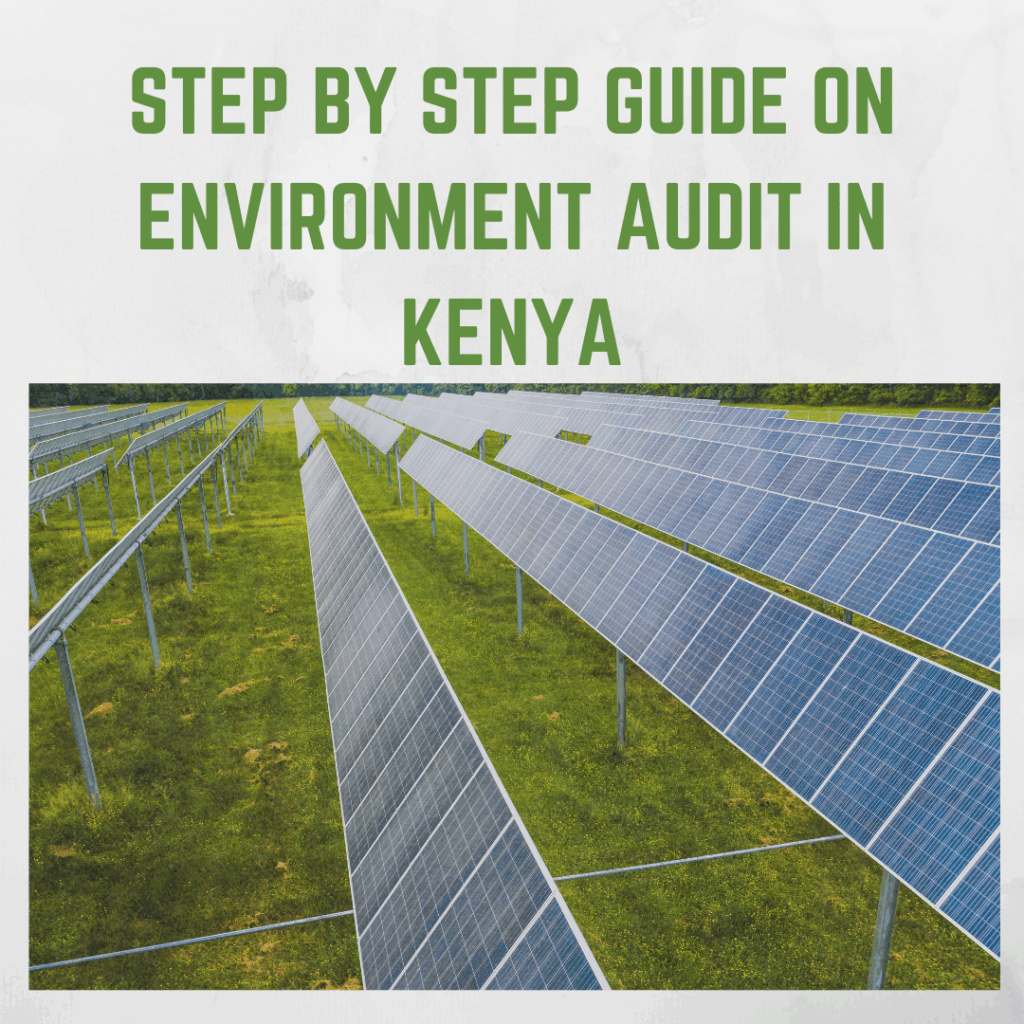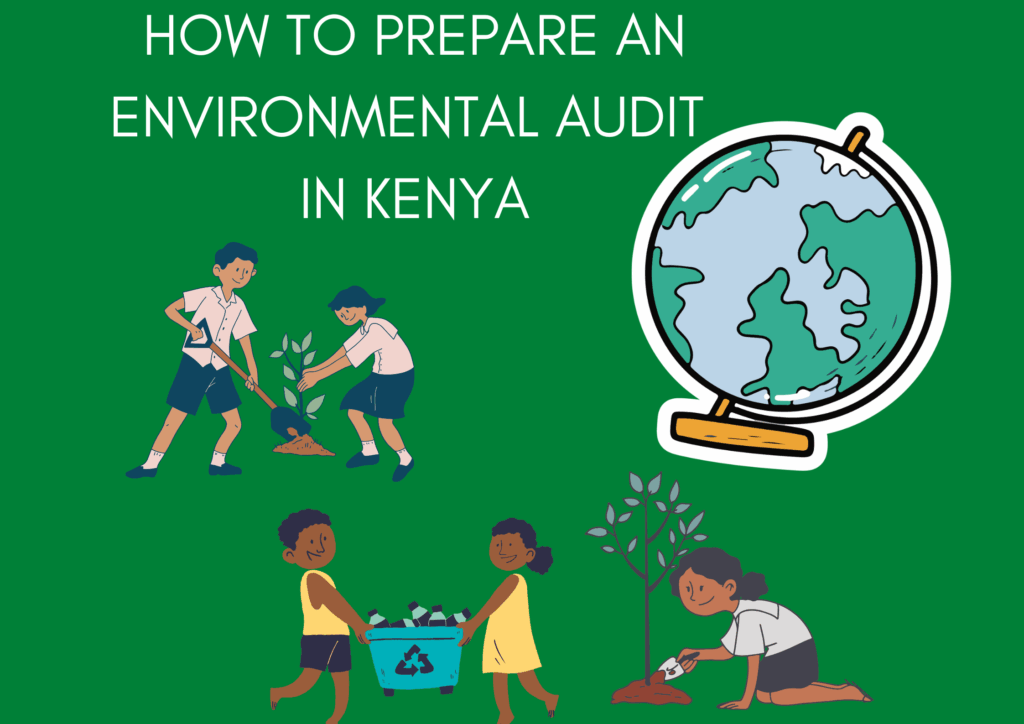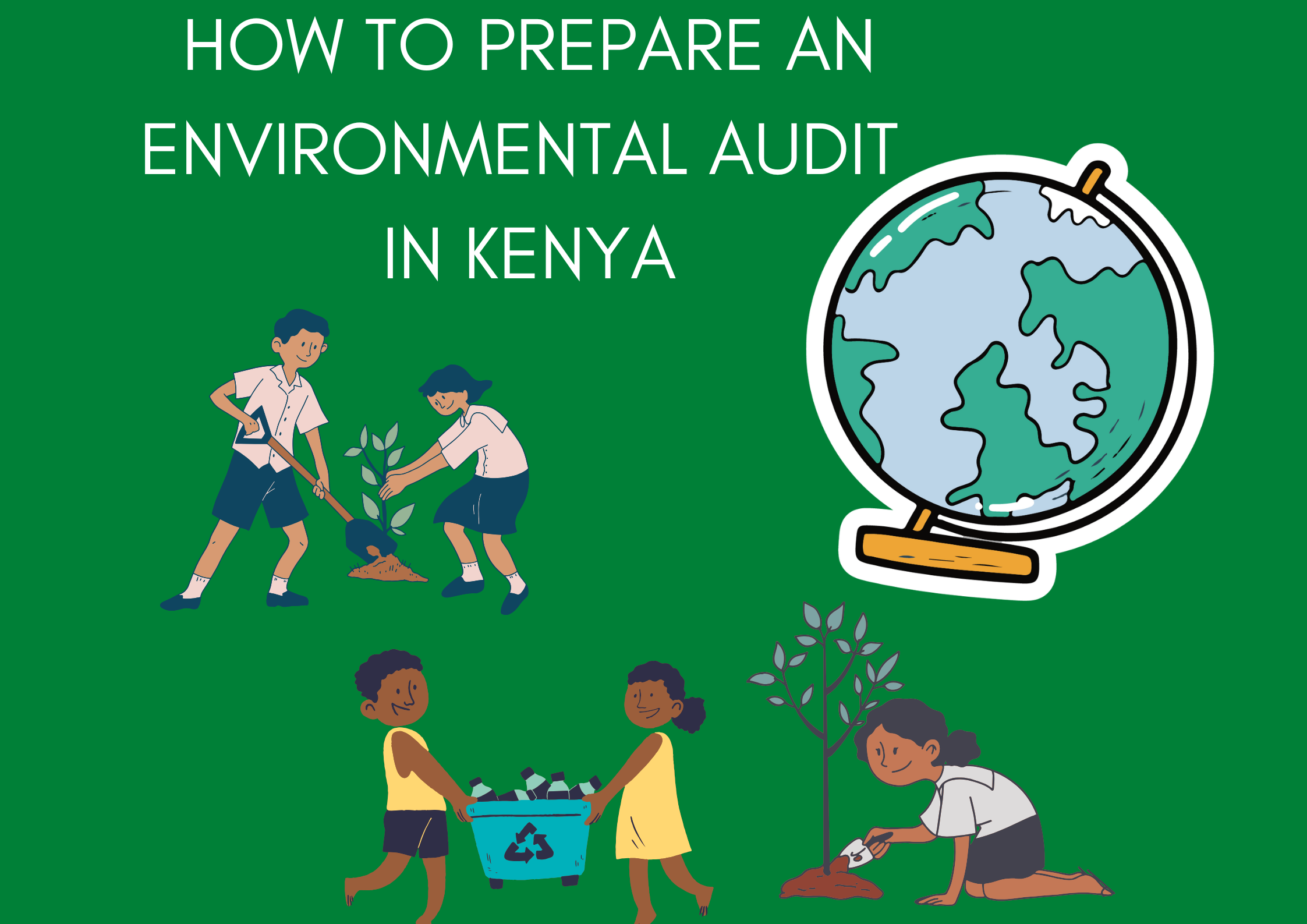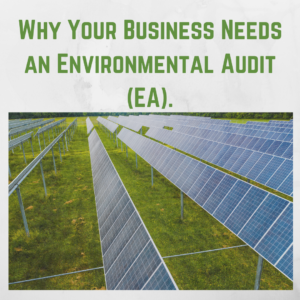If you’re operating a business or project in Kenya, whether it’s a factory, construction site, hotel, school, or petrol station, then you probably know that environmental audits (EAs) are not optional.
Under the Environmental Management and Coordination Act (EMCA), 1999 (Revised 2015), every project that has undergone an Environmental Impact Assessment (EIA) and received a license from the National Environment Management Authority (NEMA) is legally required to conduct annual environmental audits and submit reports to NEMA.
So, how do you prepare for this process? Whether you’re new to environmental compliance or a seasoned project manager, this blog will walk you through everything you need to know to get ready for a smooth, successful NEMA EA submission.
First Things First: What Is an Environmental Audit (EA)?
An environmental audit is a structured, documented, periodic, and objective review of how well environmental management is being implemented on a site. It identifies:
- Compliance with the approved EIA license and Environmental Management Plan (EMP)
- New or emerging environmental risks
- Opportunities for improvement or corrective actions
It is essentially a health check for your project’s environmental performance.
Why Is an EA Required?
Legal Basis
Section 68 of EMCA (1999): “The Authority shall require the proponent of a project for which an EIA license has been issued to keep accurate records and make annual reports to the Authority… and to take all reasonable measures to mitigate any undesirable effects not contemplated in the EIA.”
Also backed by: EIA and Audit Regulations, 2003, Regulation 31–36
Failure to submit annual environmental audit reports can result in:
- Penalties up to KSh 2 million
- Suspension or cancellation of licenses
- Prosecution of responsible parties

Step-by-Step Guide: How to Prepare for a NEMA Environmental Audit
Here’s a detailed breakdown of what you need to do:
Step 1: Know Your Audit Timeline
Environmental audits are due annually, ideally around the anniversary of your EIA license approval. NEMA doesn’t send reminders, so it’s up to you to track and submit on time.
Best Practice: Keep a compliance calendar with reminders at least 1–2 months before the due date.
Step 2: Engage a NEMA-Registered Environmental Expert
NEMA only accepts EA reports prepared by licensed Lead or Associate Experts. You can find a list of registered experts on the NEMA website or just reach out to me at valeriekinoti@gmail.com for all your audits and environment assessment needs.
Choose an expert with:
- Experience in your sector (e.g., construction, manufacturing, hospitality)
- Strong audit and reporting skills
Step 3: Review Your EIA License and EMP
Before the audit, revisit your original EIA license conditions and EMP commitments. These documents define what you were supposed to do to manage your environmental impacts.
Ask yourself:
- Have all mitigation measures been implemented?
- Are monitoring activities being carried out (e.g., noise, effluent, emissions)?
- Are waste disposal records being kept and filed?
- Were any license conditions modified or ignored?
Tip: Keep a compliance checklist based on your EMP.
Step 4: Gather Documentation and Records
A big part of an EA is proving compliance through evidence. The following documents are essential:
| Document | Purpose |
|---|---|
| EIA license & EMP | Reference point for expected commitments |
| Waste disposal records | Confirm use of NEMA-licensed handlers |
| Effluent discharge permits (if applicable) | For water pollution compliance |
| Water & energy consumption logs | Show resource efficiency |
| Incident logs | Demonstrate response to spills or accidents |
| Training records | Evidence of environmental awareness |
| Maintenance logs (e.g., oil traps, dust control) | Operational best practices |
| Photographs | Support for site observations |
| Contracts with service providers | Proof of engagement with compliant vendors |
Make sure your records are organized, signed, and up-to-date.
Step 5: Conduct the Site Visit and Inspection
This is the core of the audit process. The NEMA expert will physically visit your site to:
- Observe environmental conditions
- Check compliance with mitigation measures
- Talk to site staff and environmental personnel
- Identify potential issues or risks
- Take photos for documentation
Tip: Prepare your team beforehand. Make sure:
- All relevant staff are briefed
- Safety and PPE protocols are followed
- Key records are accessible
Step 6: Compile and Review the Audit Report
After the site visit, the environmental expert will prepare a comprehensive EA report, including:
- Site background and project description
- Legal and policy framework
- Environmental performance assessment
- Waste and emissions management
- Monitoring data and compliance evidence
- Identified gaps and corrective action plans
- Recommendations for improvement
The report should include maps, photos, annexes, and signature pages from the proponent and expert.
Format: The EA must follow NEMA’s prescribed structure, typically available in their EA guidelines.

Step 7: Submit the Report to NEMA
Once finalized, the report must be digitally submitted via the NEMA portal. Some counties may still require hardcopy submission where you will issued wit an acknowledgment letter once your the copy of your audit has been received.
You’ll need to:
- Log into your NEMA portal
- Upload the PDF or word version of the signed audit report with all the
- Pay the audit submission fee, the cost depends on project category
- Await acknowledgment and potential follow-up
Step 8: Implement Corrective Actions
Once the report is submitted, don’t just sit back. NEMA may issue follow-up instructions, especially if significant non-compliance issues were noted.
You should:
- Prioritize and implement the recommended corrective actions
- Update records to reflect the actions taken
- Communicate progress to NEMA or the lead expert
Common Mistakes to Avoid
- Submitting an EA report without the involvement of a NEMA-registered expert
- Failing to submit an audit
- Ignoring EIA license conditions
- Poor recordkeeping and documentation
- Delayed submission past the annual deadline
- Using non-licensed waste or effluent handlers
Final Thoughts: Be Proactive, Not Reactive
Environmental audits are not just about regulatory compliance. They are tools for continuous improvement that help businesses:
- Reduce environmental risks
- Cut operational costs (e.g., waste, energy)
- Improve relations with regulators and the public
- Achieve sustainability and ESG goals
With the right preparation, the audit process becomes smooth, productive, and even empowering.
“Compliance is not a burden, it’s a responsibility and a competitive advantage.”
References
- NEMA Kenya: https://www.nema.go.ke
- EMCA, Cap 387 (Revised 2015)
- Environmental (Impact Assessment and Audit) Regulations, 2003
- NEMA Guidelines for Environmental Audits (NEMA website)




